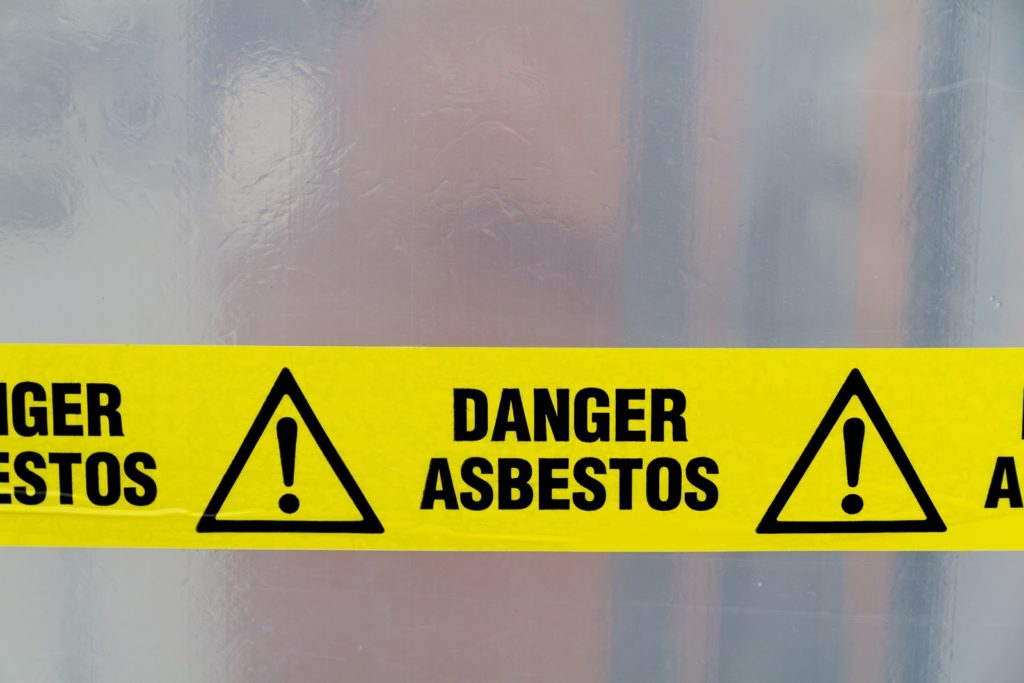What is asbestos?
Asbestos is a term used to refer to six types of silicate mineral, once commonly used in commercial and industrial construction. They are no longer so widespread because disturbed asbestos releases microscopic fibres which, if inhaled, can cause scarring and diseases of the lungs – including cancer.
Asbestos was frequently used in buildings because it has many useful properties – it is sound absorbing as well as resistant to fire, heat and electricity.
What are the different types of asbestos?
The two categories of asbestos commonly found in old buildings include:
- Serpentine asbestos. Up to 95% of all asbestos used in construction falls into this category, which is noted for its curly fibres
- Amphibole asbestos. Although much rarer, the needle shaped fibres of this type of asbestos make it more dangerous than any other kind as even a small amount of exposure can result in mesothelioma
If you are managing or living in a home built before 2000, bear in mind that such buildings are perfectly safe provided that the asbestos within them is not disturbed. Airborne particles are carcinogenic and must be professionally removed as exposure to them without equipment is very hazardous.
Who is responsible for asbestos safety in buildings?
The 2012 Regulations place the responsibility for ensuring asbestos safety on the landlord of a property, who has a Duty to Manage under Regulation 4 of CAR12. They act as the duty holder of the property and it is their task to:
- Find and identify any asbestos that is in the property
- Conduct a survey on the state of the asbestos, implement a management plan and maintain an Asbestos Register
- Make sure that all of this information is available to anyone contracted to work on the building
The management of asbestos falls under health and safety regulations, and as such is under the remit of the property managing agent in buildings such as blocks of flats. Privately owned flats within such buildings are exempt from the regulations, but any common areas in domestic buildings managed by a housing association or the council must be surveyed for asbestos.
What is the Control of Asbestos Regulations 2012?
The Control of Asbestos Regulations 2012 (CAR12) is the most up to date piece of legislation on how to deal with the substance and limit exposure to it. This legislation requires the duty holder to control the risk of asbestos exposure by:
- Working to establish if there is any asbestos present within the property
- Recording the location, amount and condition of any identified asbestos
- Assessing the risk of any asbestos that is found
- Laying out and following a clear plan for how the risks will be managed
- Providing information on the location of the materials to those who will be working on them
Who does the Control of Asbestos Regulations apply to?
The Control of Asbestos Regulations applies to those who are responsible for maintenance and repairs of the building. This responsibility should be laid out clearly within an agreement. The duties established under this legislation can be directed to you if you own the building, are responsible via a tenancy agreement, or have control of the building without a formal contract agreement. In some cases, there may be an agreement to pass the responsibilities to a separate managing agent.
How we can help you comply with the Control of Asbestos Regulations
At Red Brick Management we take our responsibility for the health and welfare of the residents of the domestic buildings we manage with the utmost seriousness. Asbestos is a carcinogenic substance, and if it is not handled correctly it can create a dangerous scenario with long-lasting health implications for all involved.
If you would like to find out more about the Control of Asbestos Regulations 2012, or any other aspect of asbestos management in domestic properties, please don’t hesitate to get in touch.
Our team of experts will be pleased to give you the benefit of their years of industry experience in dealing with asbestos and ensuring that the properties we manage are fully compliant with up to date health and safety standards.

